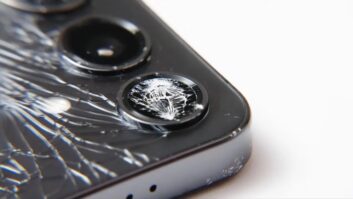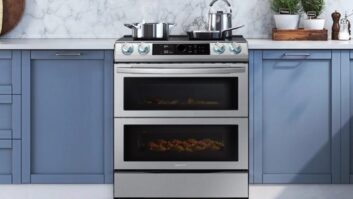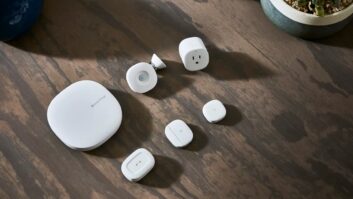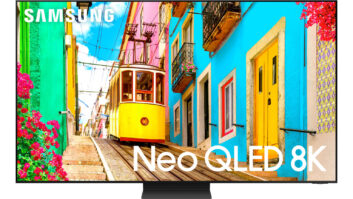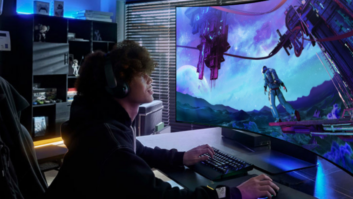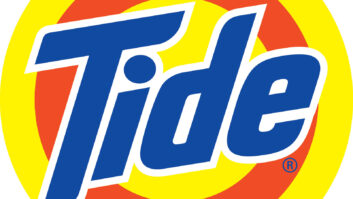Samsung used the recent Home Entertainment Expo here to unveil final versions of new rear-projection Digital Light Processing (DLP) HDTV monitors it will ship this year.
The company said it expected to be the first manufacturer to deliver rear-projection HDTV monitors based on Texas Instruments’ second-generation HD-2 widescreen DLP chip (code named “Mustang”).
In addition to reducing cost, the new chip is said to offer an improved tilt angle and switching speeds to boost brightness and contrast performance. Resolution is listed at 1280×720.
Samsung will offer DLP in two screen sizes — 43W-inch and 50W-inch — but plans to have two series of models to address different classes of distribution. The step-up “Tantus” line, which is slated for regional electronics specialist accounts, offers a different frame bezel design and includes 3:2 pull down and BBE sound enhancement.
Samsung said it would sell DTV monitors at suggested retail prices of $3,999 and $4,499 – down substantially from retails of $10,000 and higher for Mitsubishi, Hitachi and Panasonic models based on first-generation widescreen DLP chip designs.
This month the company is starting a “soft launch” to test the products with 15 outlets among five retailers across the country, including Best Buy (starting with nine stores in Minneapolis), Magnolia HiFi (Seattle), Sound Advice (Miami), Tweeter (Baintree, Mass.), and Ultimate Electronics (Denver).
Each month thereafter, Samsung expects to gradually ramp up the number of stores.
Dealers selected for the market trials originally helped Samsung in the early promotion of the promised ferroelectric LCD (FLCD) rear projection series that was placed on the back burner to advance the new DLP system.
“Best Buy will work on a slightly different timeline,” said Steve Panosian, Samsung visual display group senior marketing manager.
“The test we do in Minneapolis will determine the screen size mix and how we will roll the product out come September. Following the test Best Buy will make a decision on how many stores and which models for the rest of the country.”
Texas Instruments executives said they expect Samsung to have an exclusive on the HD-2 chip until the fall, when the first HD-2 front projectors are expected to appear. The exclusive is the result of Samsung’s speed to market, rather than any contractual agreements, the executives said.
Panosian said his company opted to go with DLP after encountering consistency issues in developing rear projection displays based on FLCD. Samsung had previously showed FLCD prototypes it intended to market in the 43W and 50W-inch screen sizes.
Because FLCD and DLP both use reflective technologies, it was a relatively simple process to adjust the chassis design for FLCD to support the new DLP engine, Panosian explained.
The initial Samsung DLP models include the 43W-inch HLM437W and the 50W-inch HLM507W both in the high-end Tantus Series. These models will be distributed to Pro Group members and AV specialists.
The 43W-inch unit weights 75 pounds and features a back-to-front footprint of 15.7 inches. The 50W-inch unit weights 84 pounds and features an 18-inch footprint. Both models include a DVI interface in addition to HD component video inputs.
Additionally, the DLP models include multiple widescreen format inputs, DVD progressive scan input 15-pin D-sub computer input and 3/2 pull down conversion for film-based sourced material. The models also added dual-NTSC tuner PIP functions, with various sizing and positioning options for the second screen including side-by-side twin picture mode.
Samsung will also offer two core line (non-Tantus) models in the HLM506W ($3,999) and 43W-inch HLM4365W ($4,499). The difference from the Tantus line is mostly cosmetic. The 65 series models use the exact same dimensions as the previously announced FLCD models (including a slightly wider bezel)






